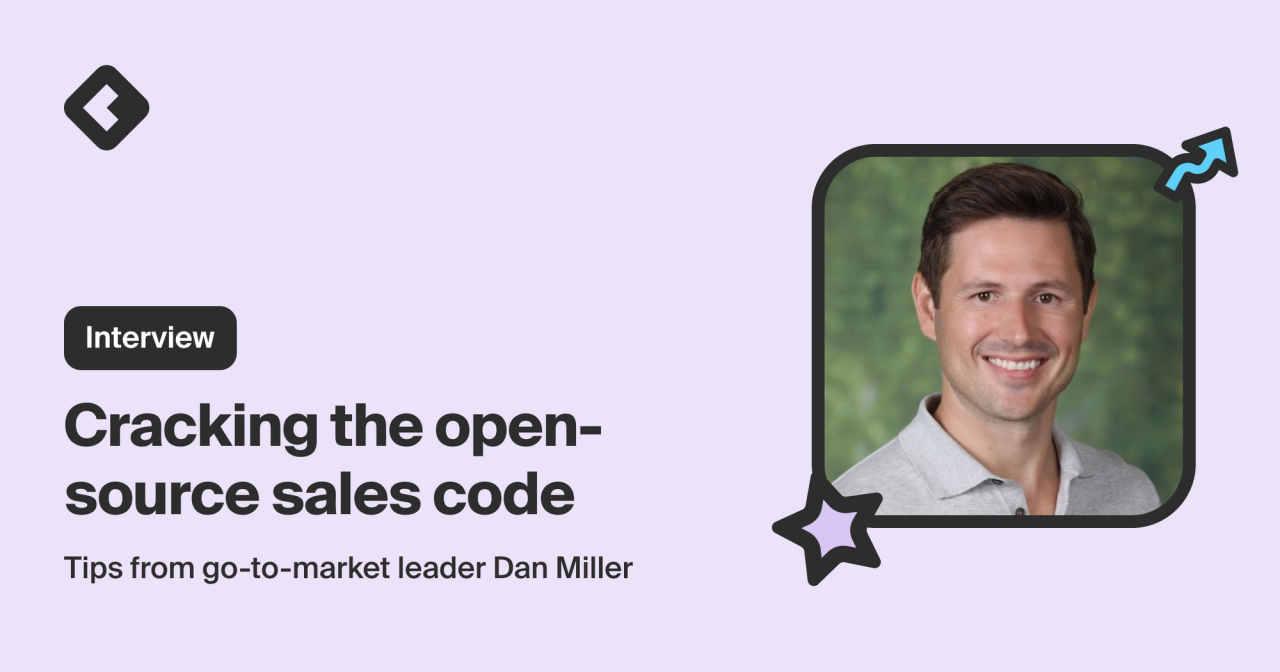If sales is a puzzle, commercial open-source software has more pieces than most.
Dan Miller would know. He’s been a go-to-market leader and advisor at multiple open-source companies, including Common Room customer Loft Labs.
In that time, he’s learned a lot about selling to developers.
Here are three takeaways he shared with us, including:
- Why data centralization is key to performance
- Why speed is essential in open-source sales
- How automation powers collaboration
1. Success starts with centralization
Sales teams sink or swim depending on the data they have. It’s what allows them to find, prioritize, and engage opportunities quickly and scalably.
But buying signals are spread across multiple locations—digital channels, products, CRMs. And when it comes to open-source activity, they're often difficult to see.
If this data isn’t centralized and packaged up in a sales-friendly way, it’s no good to anybody.
“Step number one to add value for sales teams is having all this data consolidated in one place,” Dan said. “Then you have to figure out which signals can be exposed to predict long-term revenue.”
Say a company has multiple people from the same organization active in its GitHub repository. Repo stars and pull requests—combined with other buying signals, such as website pricing page visits and form fills—can help sales reps zero in on high-intent prospects and run a first call, craft a first email, or send a first LinkedIn message.
But only if that information is delivered to them in a fast, effective way.
“Common Room is the platform that helps us get there,” Dan said. “I want to drive conversion metrics across the entire sales process—from a developer relations person having a conversation with someone to an official handoff to a sales rep. Common Room allows us to make informed decisions on how we do that. We would be flying blind without it.”
2. Open-source sales is a ticking clock
Every sales team wants to close deals faster, but speed is even more crucial in open-source sales.
That’s partly because organizations may fundamentally change how their technology stack is architected based on open-source software.
“You have to engage and qualify new open-source users quickly,” Dan said. “If a company goes and builds their whole stack around the open-source product and doesn't have you involved, it becomes a lot harder to show them why it’s in their best interest to go commercial.”
The commercial open-source software business model is often compared to product-led growth. While there’s plenty of overlap—both are built on the foundation of giving users direct access to the product—product-led companies don’t have to worry about customers constructing their tech stacks around a free trial.
Sellers must start by understanding exactly who they’re talking to—and whether it’s the right person.
“Developers are not budget holders a lot of the time,” Dan said. “It's all about engaging with the right person at the right time to deliver the value proposition around why it makes sense to use the commercial platform from the get-go.”
But identifying an economic buyer isn’t enough. Sales teams must also keep up with their activities in real time.
“It comes together in a solution like Common Room,” Dan said. “We have all this data, and Common Room gives us a way to stay alerted to activity and engage the right people at the right time.”
3. Sales and DevRel work better together
DevRel is a huge value driver for open-source companies—it fuels brand awareness and product adoption.
But it’s even more powerful when DevRel professionals and go-to-market teams work hand in hand.
For example, Dan finds that conversion rates are better when a BDR reaches out to someone who’s already interacted with a member of the DevRel team.
“One thing that we've already seen success with is the developer relations folks just documenting these exploratory calls that they're having with the community and sharing the information that we need,” Dan said. “That allows us to drive accountability between both organizations to make sure that these handoffs are happening in real time and that they're successful. We’re already seeing a higher conversion rate from the first call.”
Successful collaboration calls for open and consistent communication between teams—as well as eliminating tedious, time-consuming processes.
“Before Common Room, finding and collaborating on opportunities was very manual and ad hoc,” Dan said. “There was no automation at all, and there was really no way for us to track it because a lot of the stuff that was happening was just living in Slack. Now we have a common place—Common Room—to come together and drive every function that we have. It serves as the foundation for intelligent automation.”
DevRel practitioners can automatically tag and flag activity in Common Room and port it over to Salesforce using a bidirectional integration.
“There's massive value in the ability to filter and tag things,” Dan said. “We didn't have a way to highlight users and follow up with them before. And there’s massive value in having Common Room mirror Salesforce. It’s our go-to market source of truth. We can uncover user activity in Common Room, send it over to Salesforce, and then go build strategies around how to engage people.”
Open-source sales can be complicated. It’s a lot simpler when you have the right tools at hand.
Uplevel your open-source sales strategy with Common Room
Ready to see how Common Room helps you streamline and scale open-source sales?

